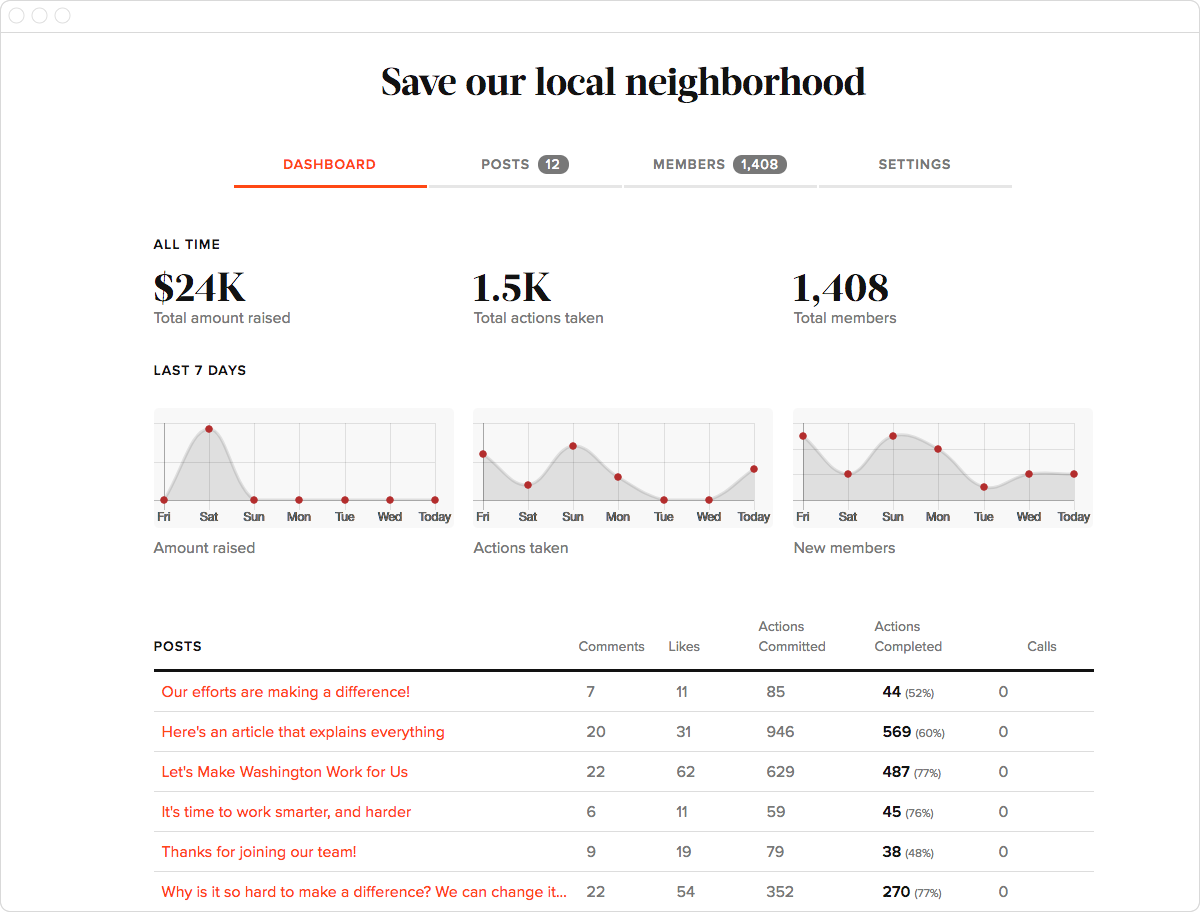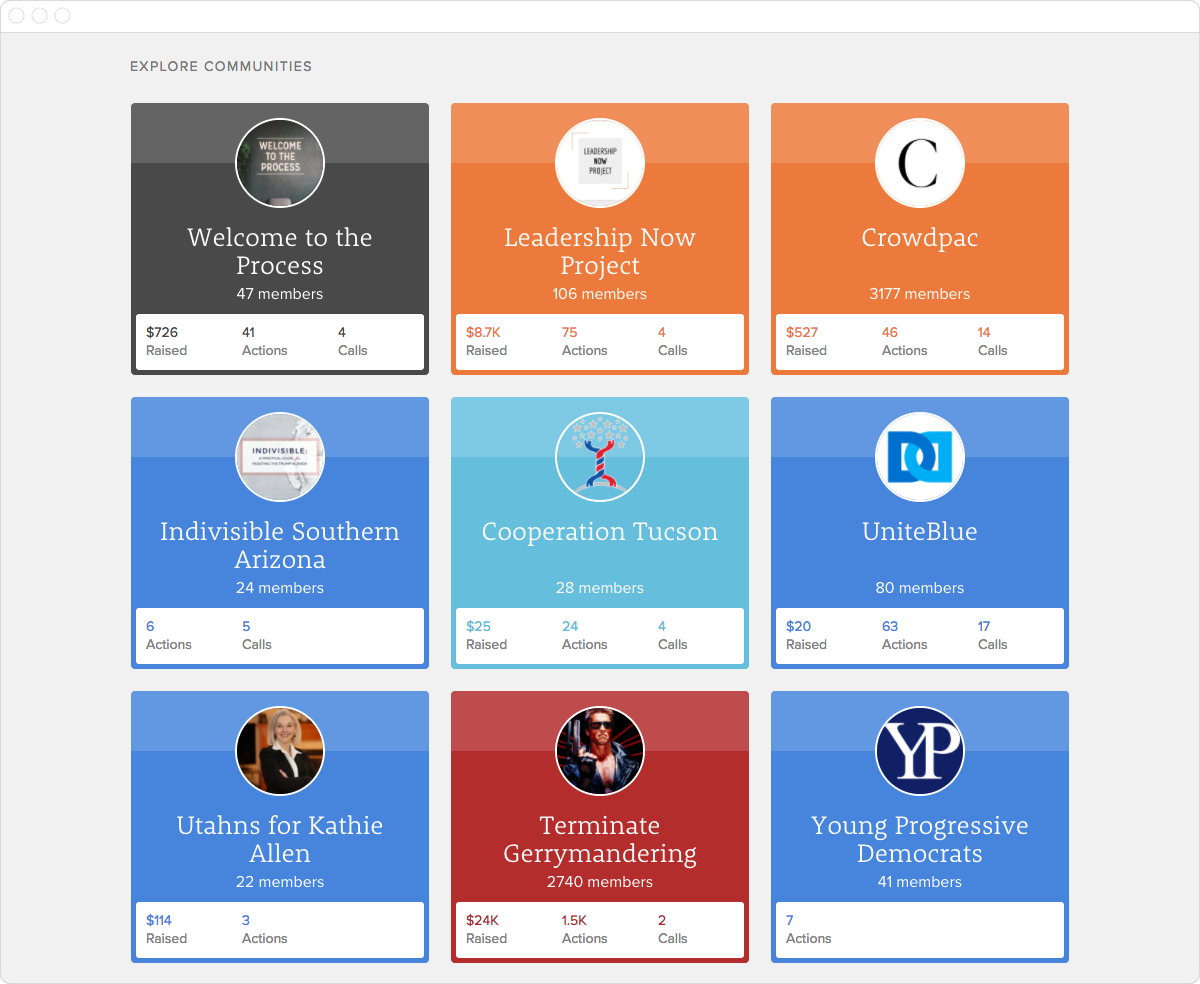Crowdpac Communities
Following the 2016 election cycle, we wanted to broaden our reach beyond fundraising to provide a way for people to organize and take meaningful collective action. This wasn't another “Facebook for politics,” but rather a way for us to extend the impact of the communities already being built around candidates on our platform.
A parallel challenge was how to slot into people’s lives in a way that added value, and wasn’t just another tool for them to forget. We did this by focusing on external actions and layering in measurement.
- Product strategy
- User research
- UX Design
- UI design
- Front-end engineering
- Product management
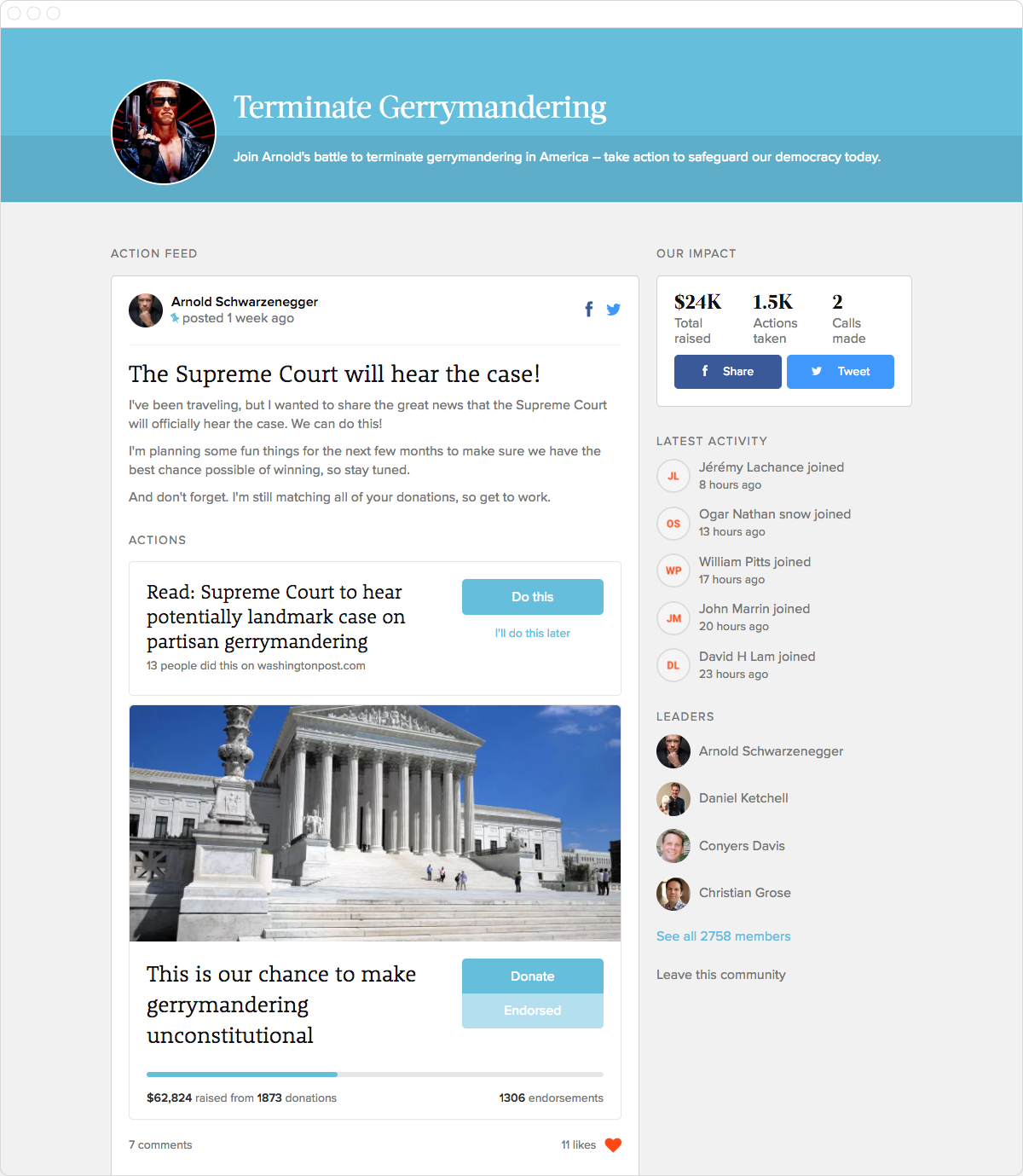
Starting with research
Design isn’t just solving problems – it’s equally about problem finding. With a Jobs To Be Done lens, I sourced and interviewed a diverse group of people that we thought would get value out of the product we were considering. I didn’t put any ideas in front of them but rather engaged in a conversation to learn about what they were working on and the challenges they were facing. I spoke with activists, people considering a run for office, political operatives, and novices. I tracked everything in Trello and distilled the learnings into key insights for our team which became the foundation for the design process.
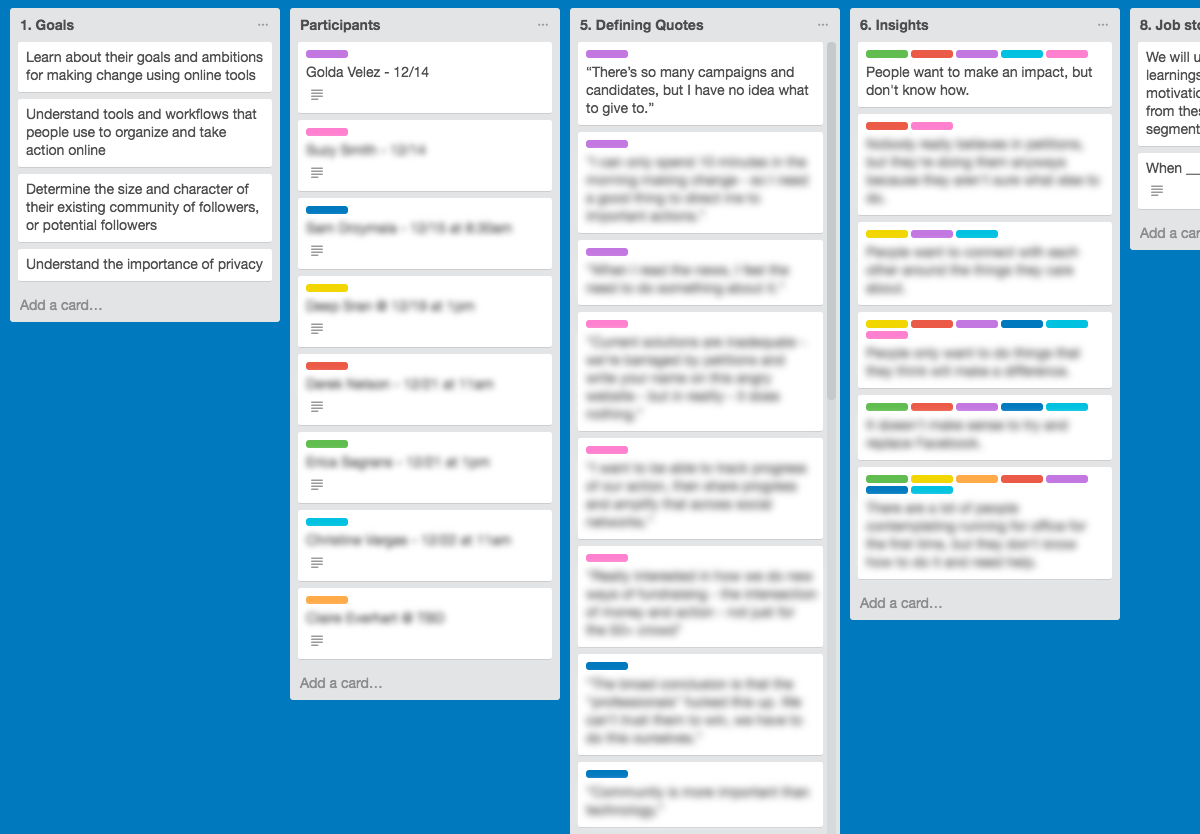
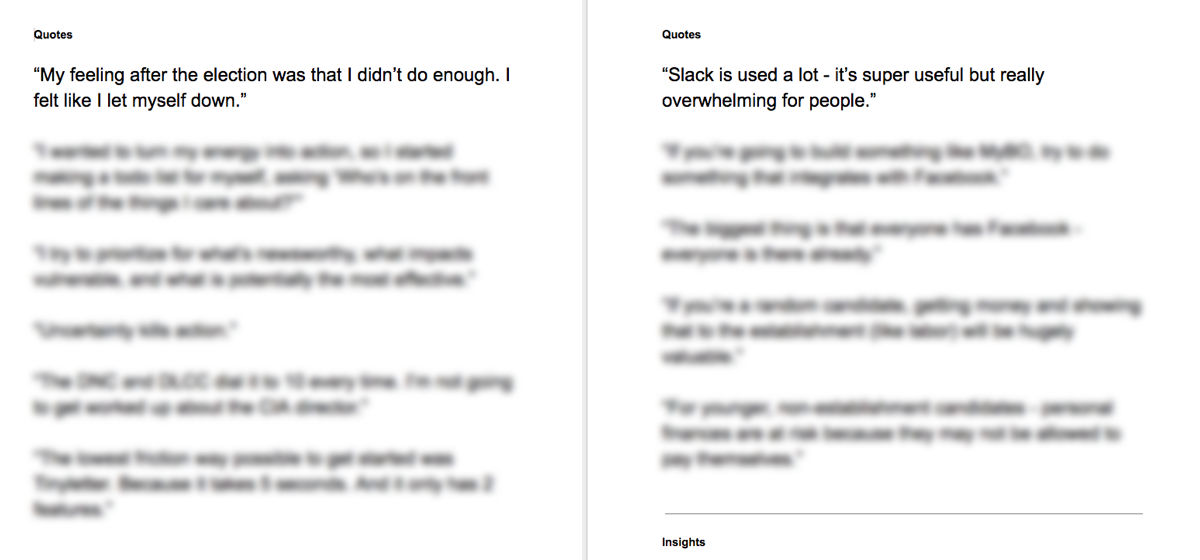
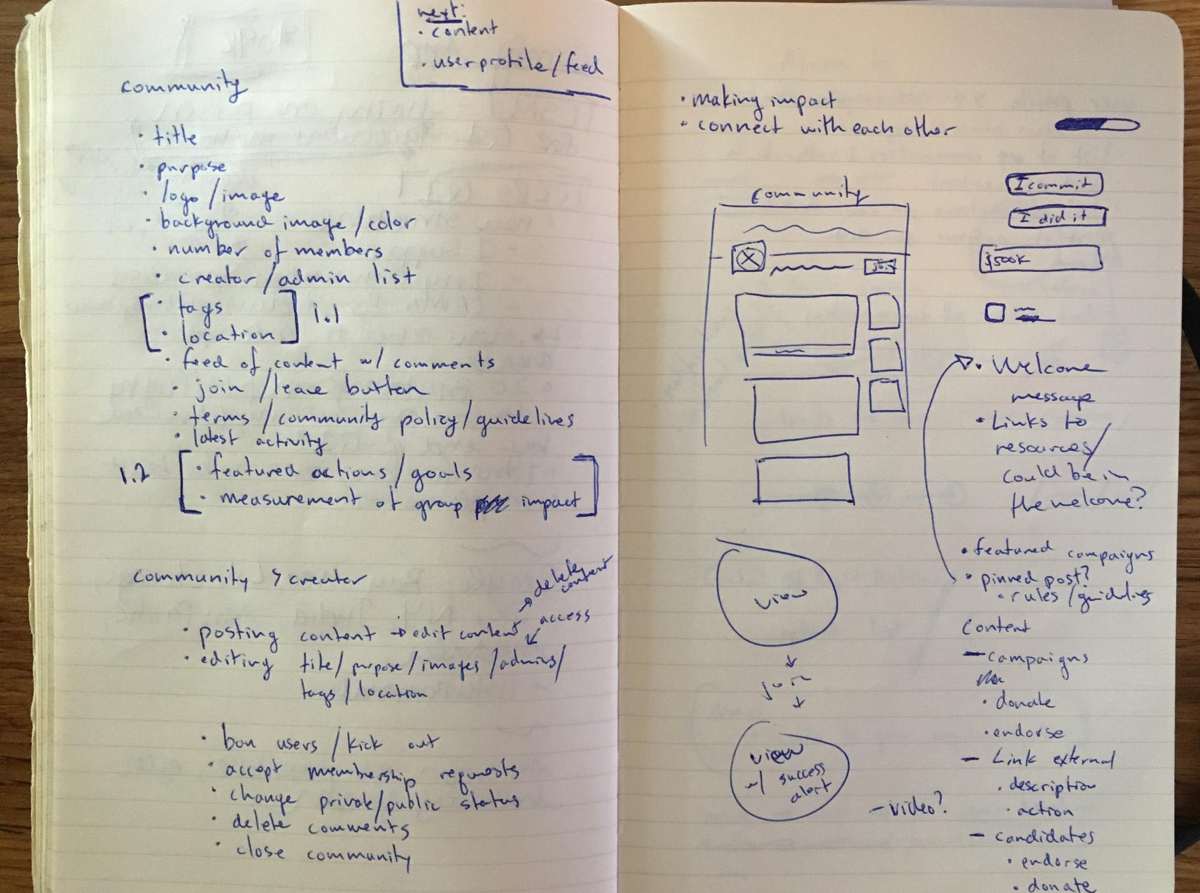
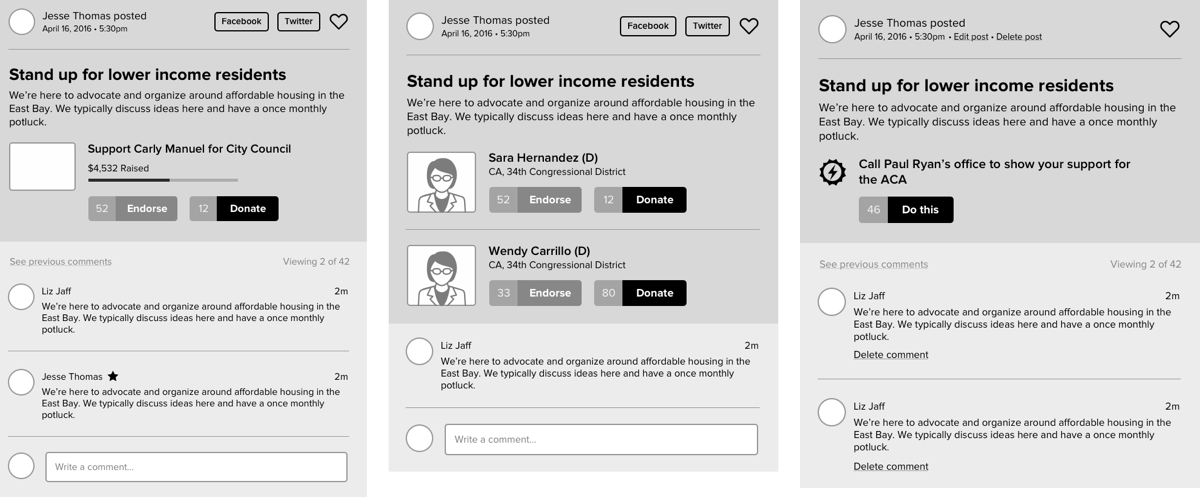
Posting meaningful actions
The core mechanic of the platform is people creating and taking meaningful political action, not simply “joining the conversation." To that end, we iterated our posting UI to ensure we were matching user needs. While we are able to provide a great donation and calling experience natively, we recognized that much work was happening elsewhere, so we allowed folks to share those external actions but use our platform to track and measure the impact.
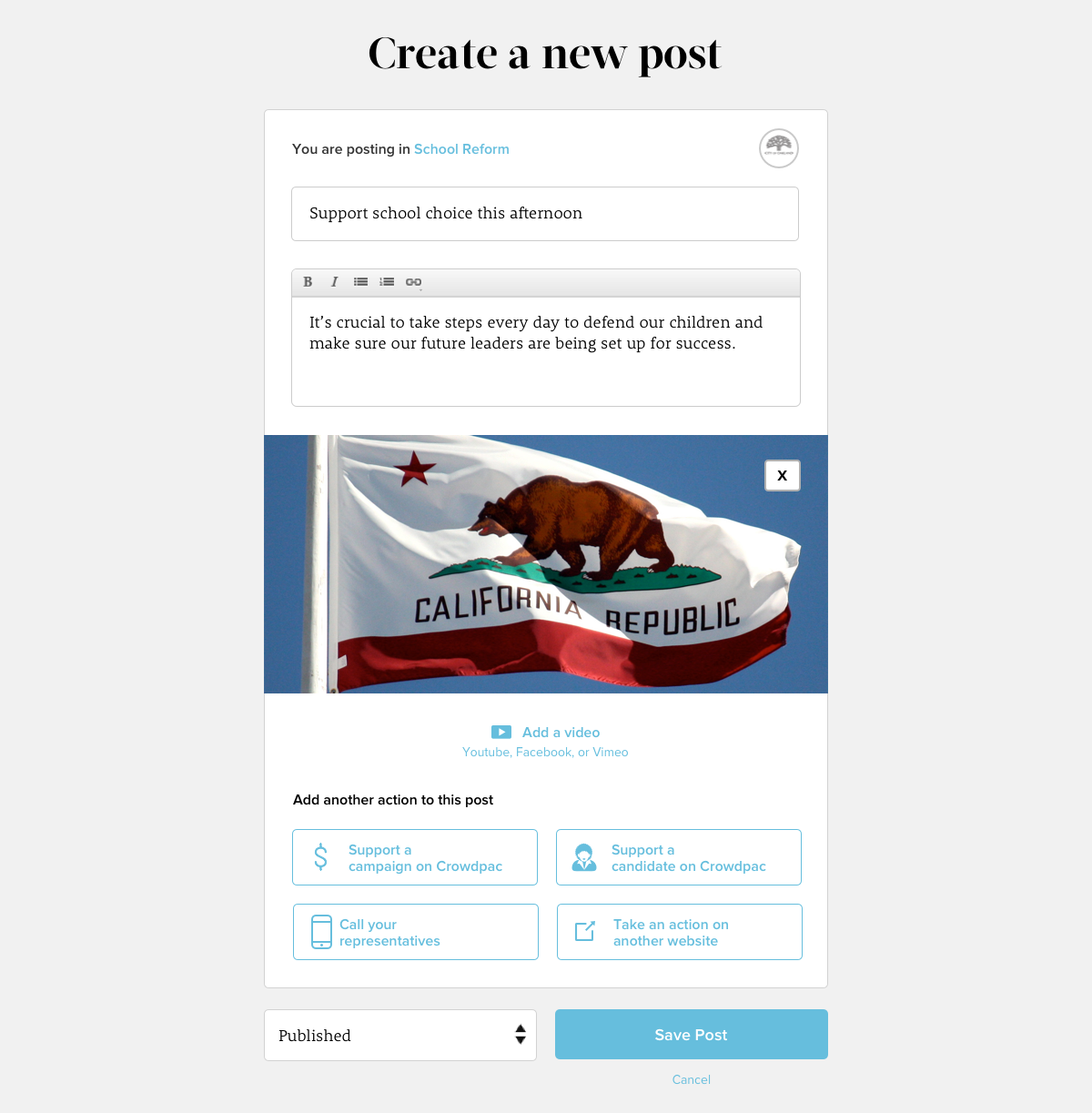
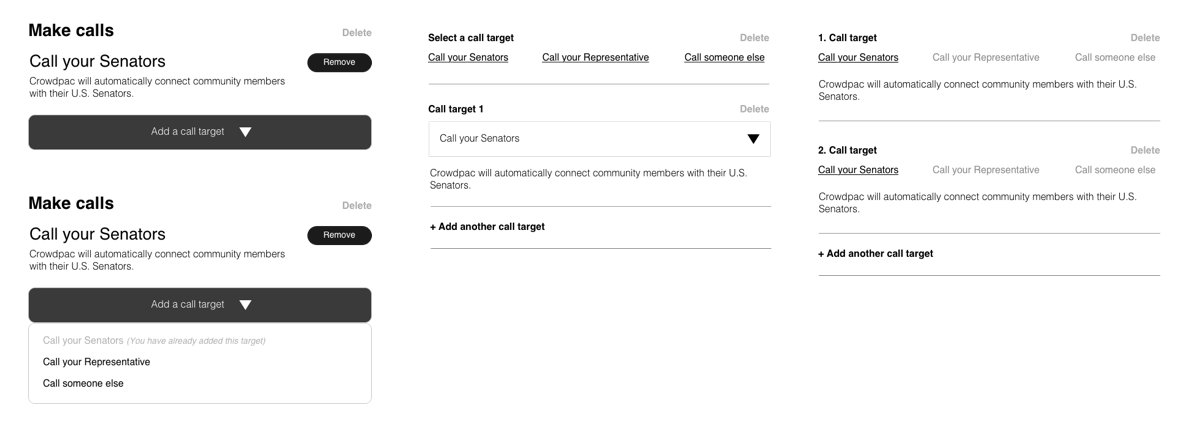
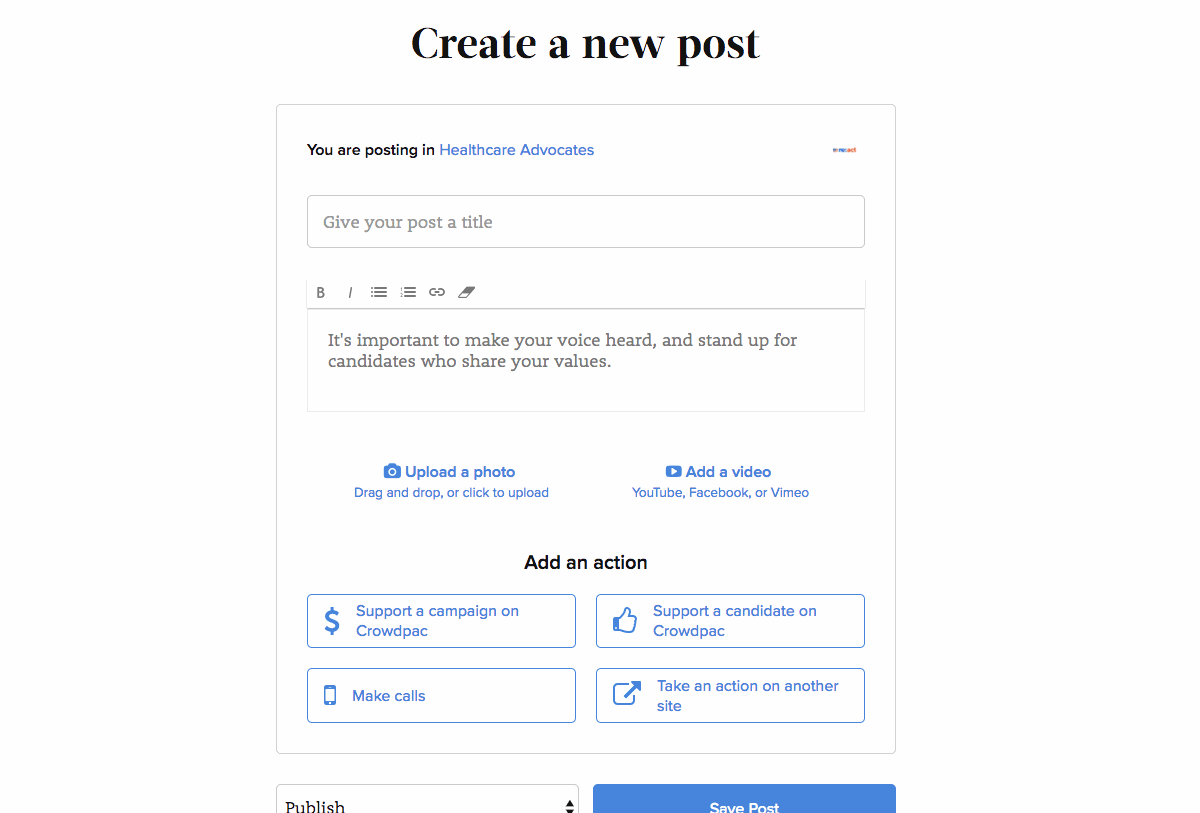
The to-do list
One of the key innovations that I was able to derive from my research was the concept of people being able to keep track of all their political calls to action in a single place. That manifested in the product as the Action to-do List, which tracks which actions you’ve completed across all of your communities when you didn’t quite follow through, and lets you pick up right where you left off.
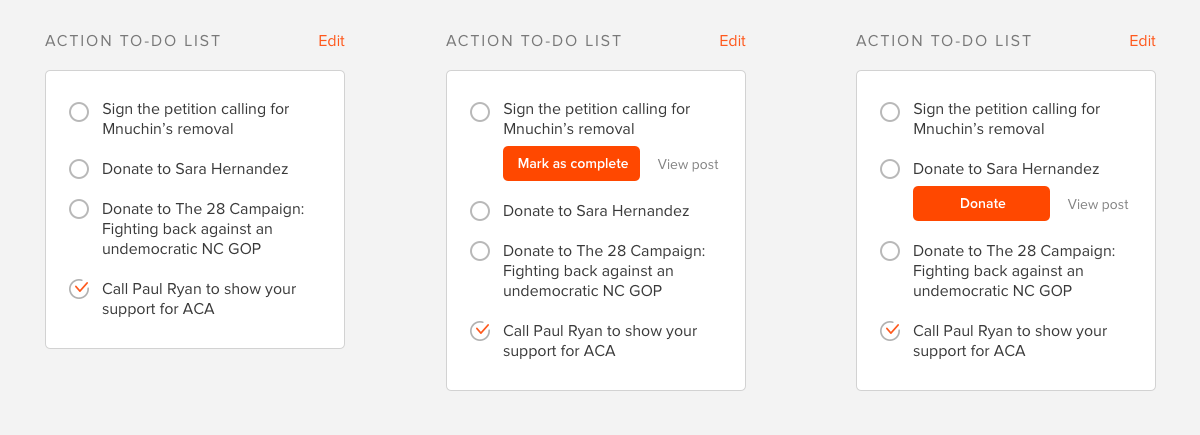
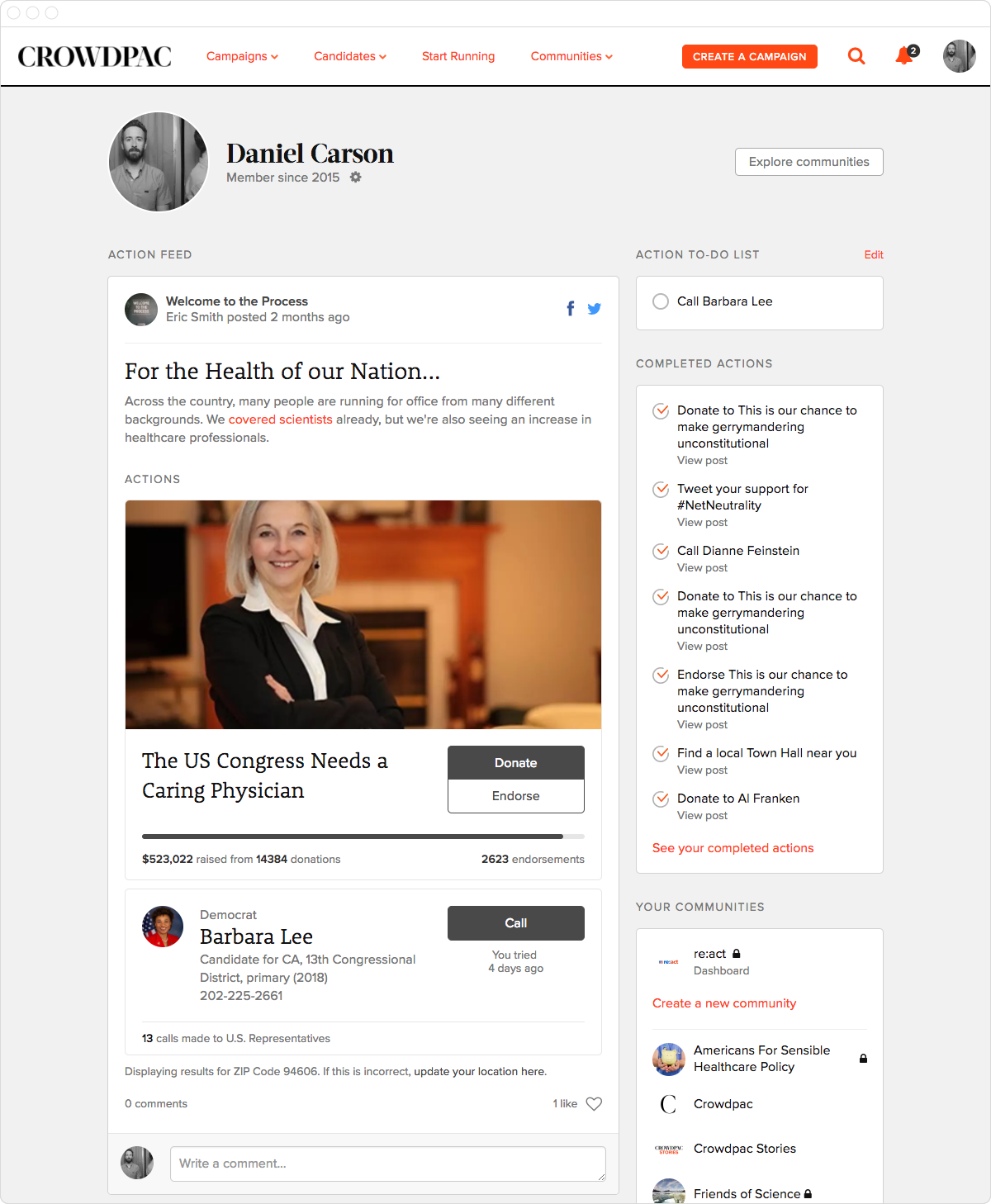
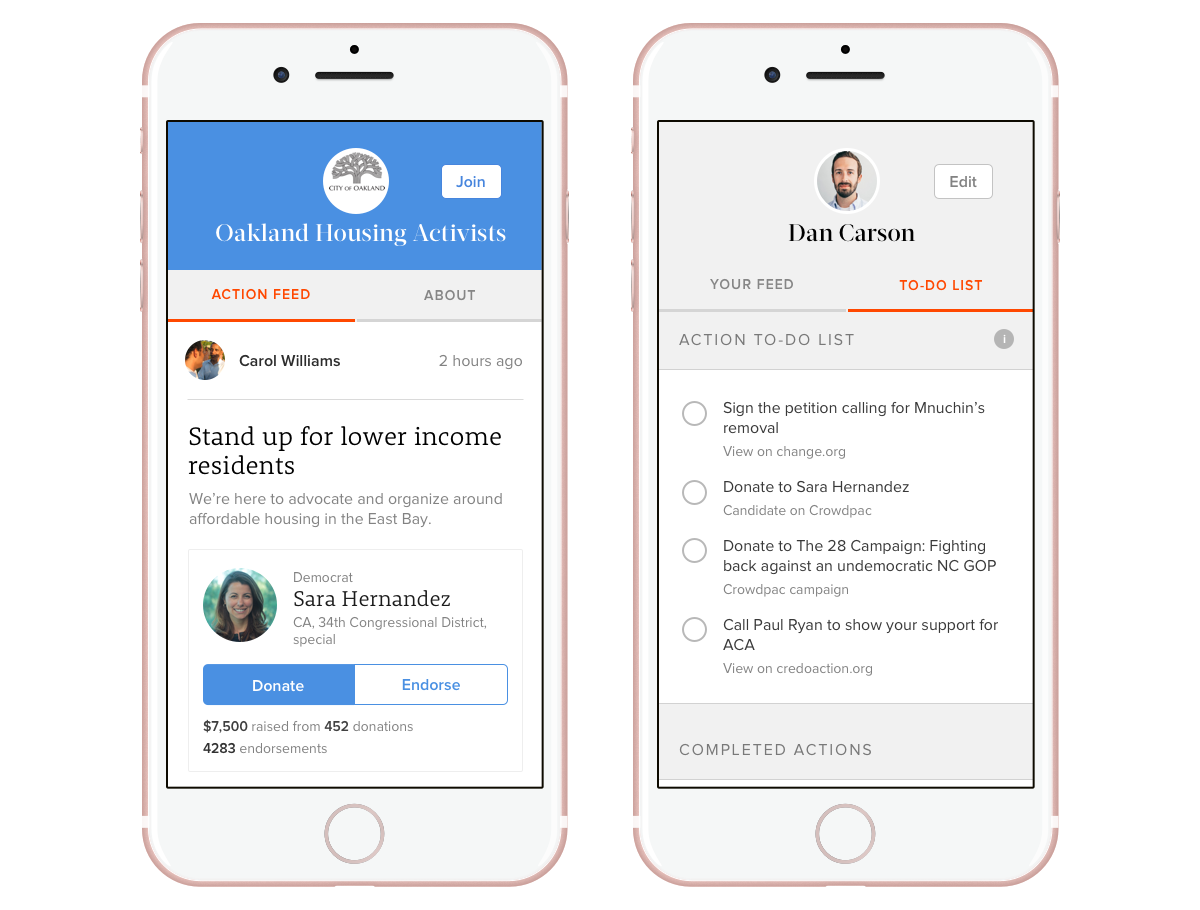
Making calls
At our beta launch, the only supported actions included supporting a candidate or campaign on Crowdpac, and external actions. In speaking with our users, and based on our own political expertise, we prioritized a native Call Tool ahead of some key legislative fights. In the span of 2 weeks, we were able to design and build a product that automatically matched users with their Senators and Representatives, personalized call scripts by location and topic, and tracked activity across the platform.
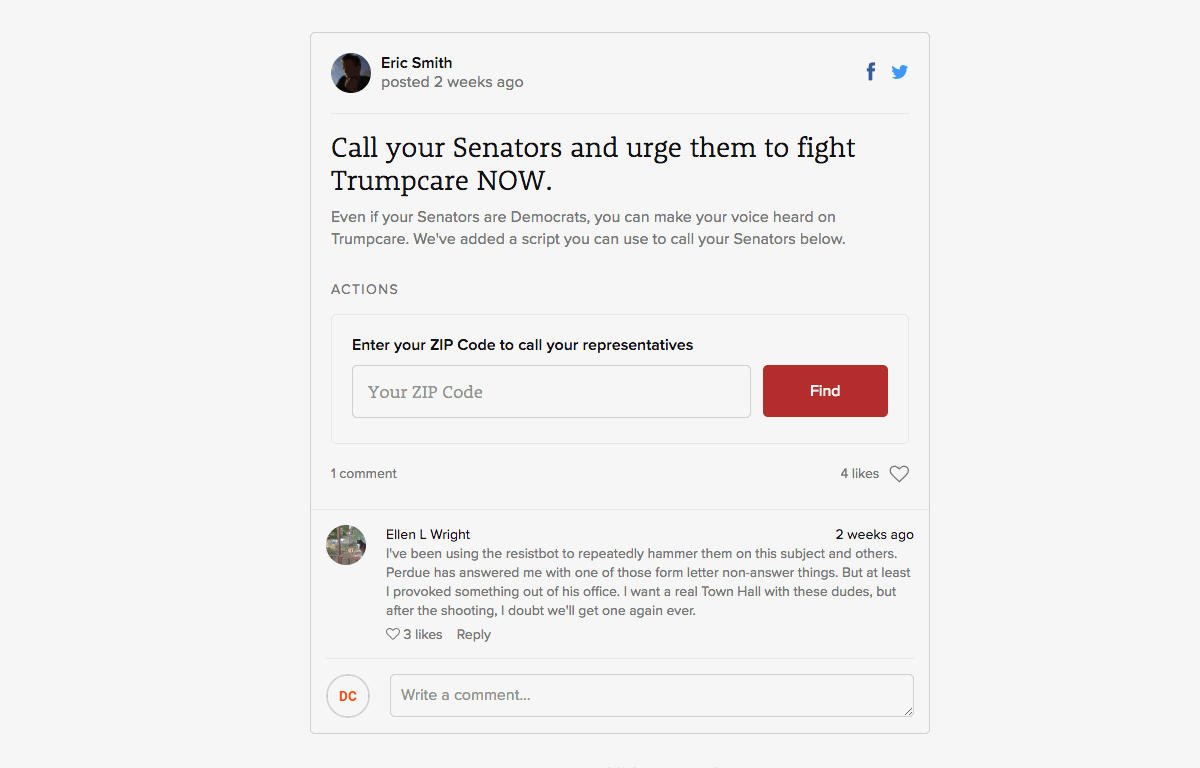
Social interactions
While the core mechanic is about taking meaningful action, we needed to deliver some of the basic social network interactions that our users would expect. We launched with a basic commenting functionality, and over time added the ability to reply and nest comments, like comments, and deep link into conversations. Several releases later we introduced a global, site-wide notification feature so our users could be alerted when others were interacting with their content.
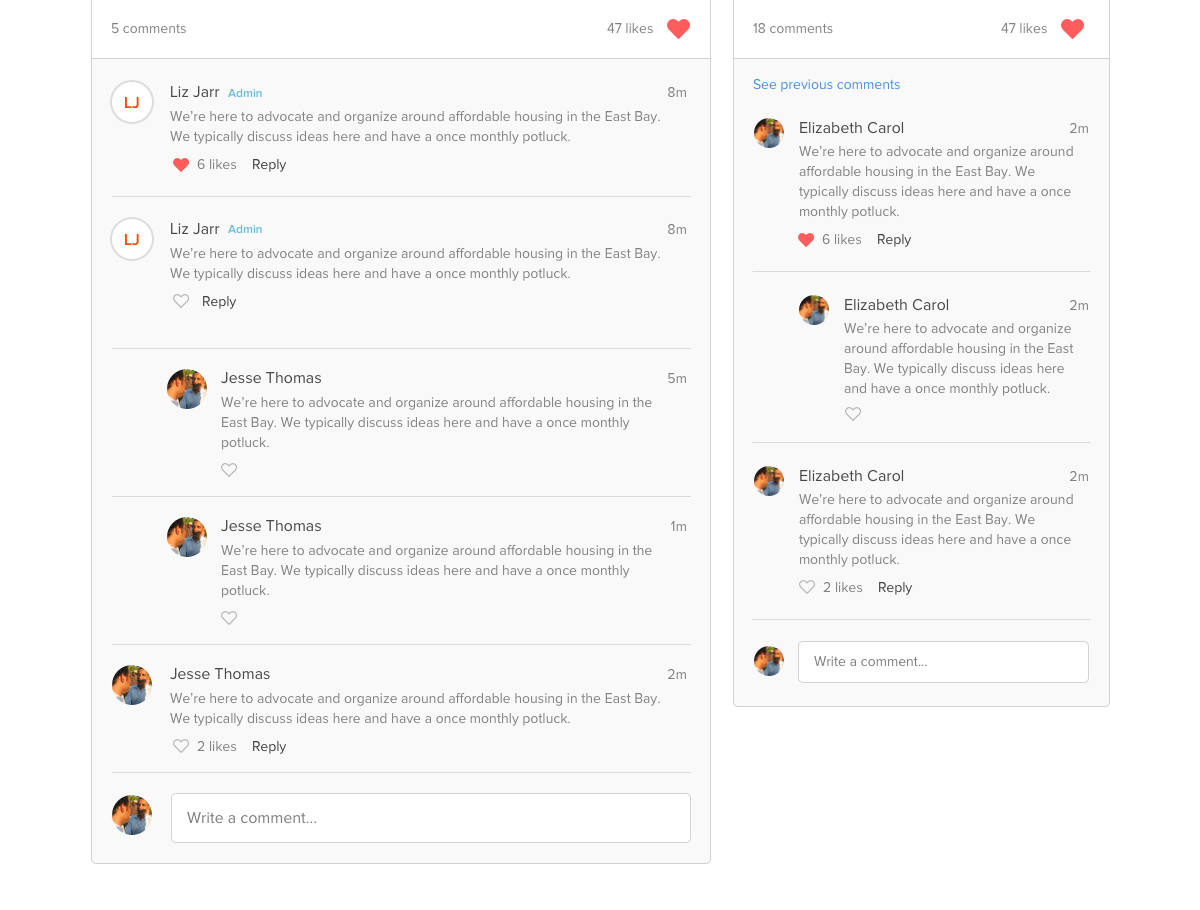
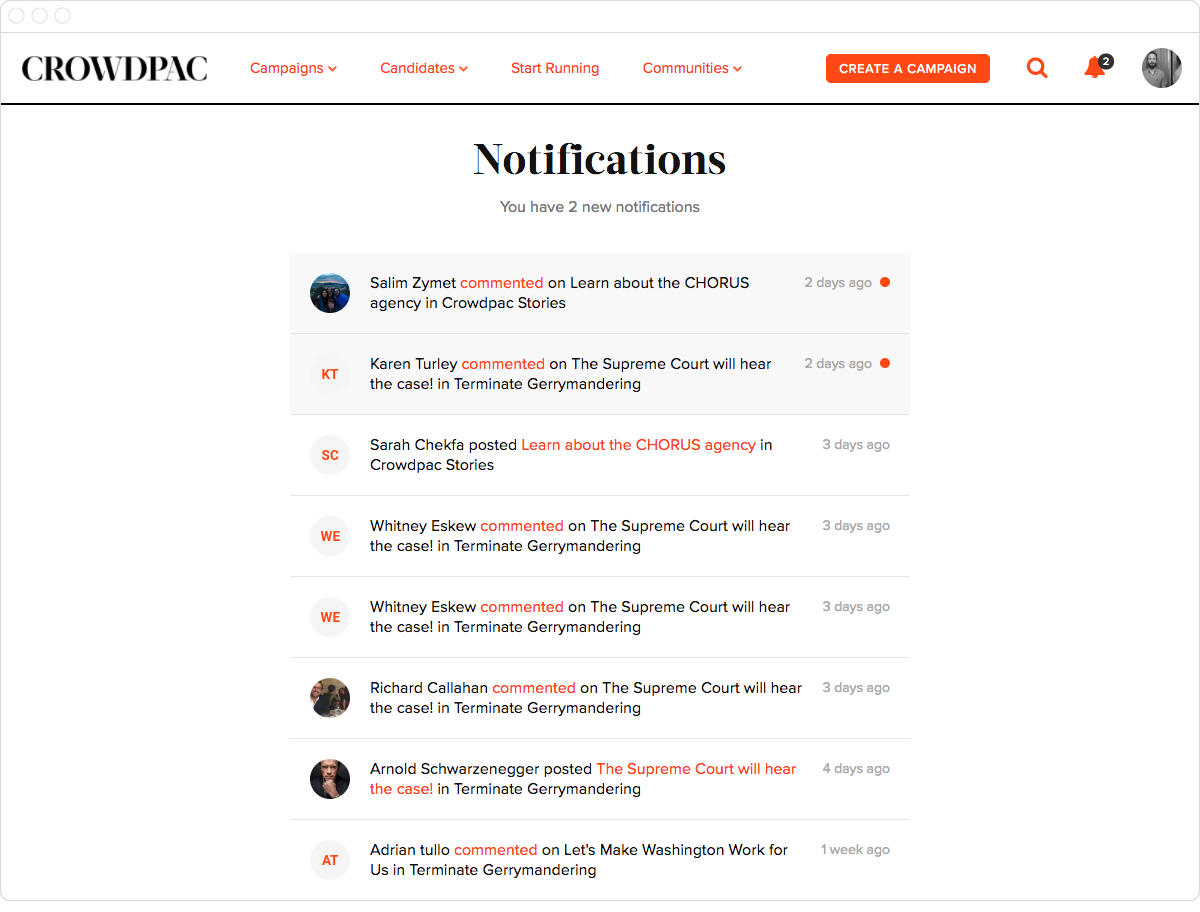
Tracking impact
To truly deliver impact you must provide leaders and organizers with the data and tools to track how their content and actions are performing. One of our early iterations to the leadership backend included a metrics dashboard where they could monitor the performance of the community across a number of different metrics. On the public-facing side, there are no vanity metrics. We reflect back the metrics that speak to the purpose of the tool – money raised, actions taken, calls made.
